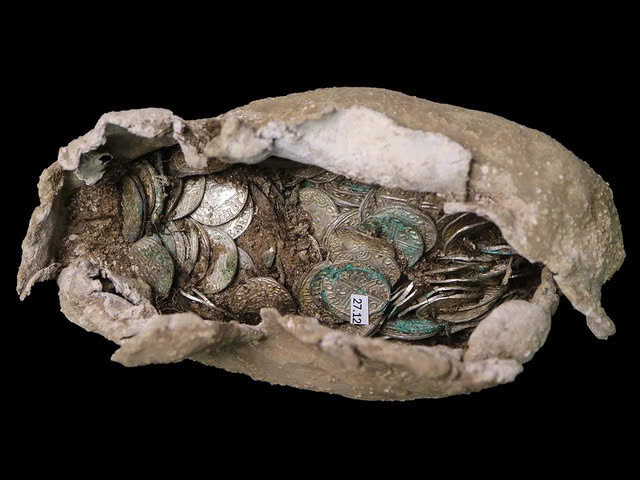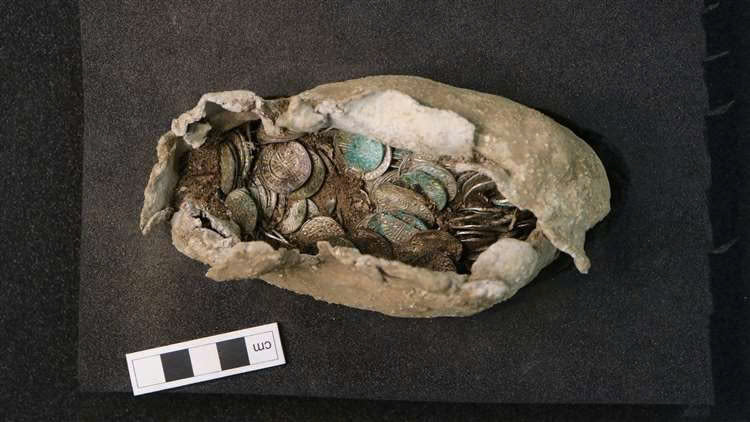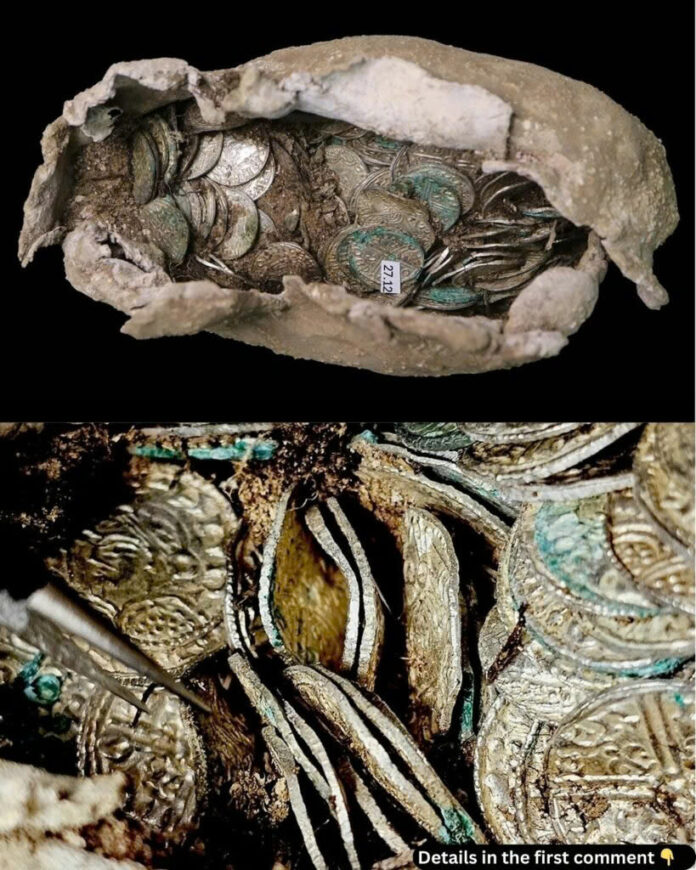In a remarkable archaeological discovery at Suffolk’s Sizewell C nuclear power station site, experts have uncovered a precious hoard of 321 silver coins dating back to the 11th century. This extraordinary find, nicknamed “the pasty” due to its distinctive shape, offers a fascinating glimpse into medieval England’s history.
The Spectacular Discovery

The treasure was found by chance during routine drainage work overseen by Oxford Cotswold Archaeology (OCA). What initially appeared to be scattered bricks revealed a lead-encased bundle containing hundreds of silver coins, strategically buried at the intersection of two medieval boundary lines. Archaeologist Andrew Pegg recalls the moment with excitement: “I was shaking when I first unearthed it. Seeing the coin edge peeking at me was stunning.”
Historical Significance
A Window into Medieval Times

The coins span the years 1036 to 1044, covering the reigns of three monarchs: Harold I (Harold Harefoot), Harthacnut, and Edward the Confessor. This period marked a crucial transition in English history, from Danish rule under King Cnut and his sons to the restored Wessex dynasty. The diversity of minting locations, including London, Thetford, Norwich, and Ipswich, reflects the sophisticated economic networks of medieval England.
Economic Value and Social Context

The hoard’s worth, equivalent to 16 cows in the 11th century, suggests its owner was likely a prosperous farmer or merchant. The strategic burial location indicates an intention to retrieve the treasure later, though this never occurred, creating what archaeologists now call an “archaeological time capsule.”
Video
Modern Impact and Public Engagement

The discovery will be featured in the upcoming season of Digging for Britain on BBC Two and iPlayer, allowing the public to explore this fascinating piece of history. Damian Leydon, site delivery director at Sizewell C, emphasizes the significance: “This project provides a rare and fascinating glimpse into Suffolk’s past, deepening our understanding of this part of Britain.”
Cultural Heritage Preservation

The find highlights the delicate balance between modern development and historical preservation. While Sizewell C continues its development as a two-reactor nuclear power station, this discovery, along with other artifacts including WWII equipment and an Iron Age wooden axle, demonstrates the rich historical legacy beneath our feet.
The coins are expected to be displayed in museums, offering visitors a tangible connection to England’s medieval past through exhibitions and educational programs. This remarkable discovery not only enriches our understanding of 11th-century England but also reminds us of the countless historical treasures still waiting to be discovered.

